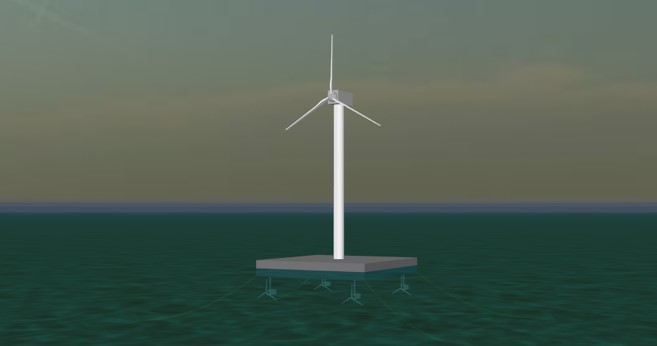Key outcomes
The investigation of HAPI concept led us to various interesting conclusions in terms of both its technical aspects and its social footprint. Having selected an appropriate location with favorable features to deploy our system, we then focused our efforts on exploring its ability to perform effectively under ordinary circumstances. As a result of this research, the main outcomes are:
- The feasibility of our design was ensured, since its stability under normal operation conditions was tested and achieved.
- The energy generation from our system is expected to cover the local electricity needs in a sufficient level.
- This innovative idea could attract governmental subsidies and thereby, as our financial analysis confirmed, it would be rendered cost-effective and worth constructing.
- Its minor impact on the surrounding areas and on river life makes it a sustainable project, which would have multiple benefits for the local communities.
Figure 1: HAPI system
Recommendations for future work
Due to physical limitations concerning the scope and the timeframe of our project, we could not delve deeper into every aspect of the concept, as we would have liked to. Therefore, there are some issues that need to be further investigated in future time, so that we have a complete picture of the potential of this idea.
Initially, a complete structural analysis should be made, so that the system response will be tested under extreme environmental conditions. Also, despite that we tried to achieve a considerable total power output to meet the local demand as much as possible, the site conditions would not allow us to install a higher power capacity system, because the river waters are too shallow to accommodate a larger floating structure. Nevertheless, a potential enhancement in energy generation could become possible by building arrays of hybrid systems alongside the river. Finally, the development of a suitable storage system which could be installed onshore and directly connected to our system is considered as a necessary prospect, because it would ensure the dispatchability of the system energy production and hence, its disengagement from the unpredictability that stems from the stochastic nature of the wind.
Initially, a complete structural analysis should be made, so that the system response will be tested under extreme environmental conditions. Also, despite that we tried to achieve a considerable total power output to meet the local demand as much as possible, the site conditions would not allow us to install a higher power capacity system, because the river waters are too shallow to accommodate a larger floating structure. Nevertheless, a potential enhancement in energy generation could become possible by building arrays of hybrid systems alongside the river. Finally, the development of a suitable storage system which could be installed onshore and directly connected to our system is considered as a necessary prospect, because it would ensure the dispatchability of the system energy production and hence, its disengagement from the unpredictability that stems from the stochastic nature of the wind.
|
STRATHCLYDE UNIVERITY
16 Richmond Street Glasgow G1 1XQ Scotland, United Kingdom Phone: +44 141 552 4400 https://www.strath.ac.uk © Copyright 2018 |



